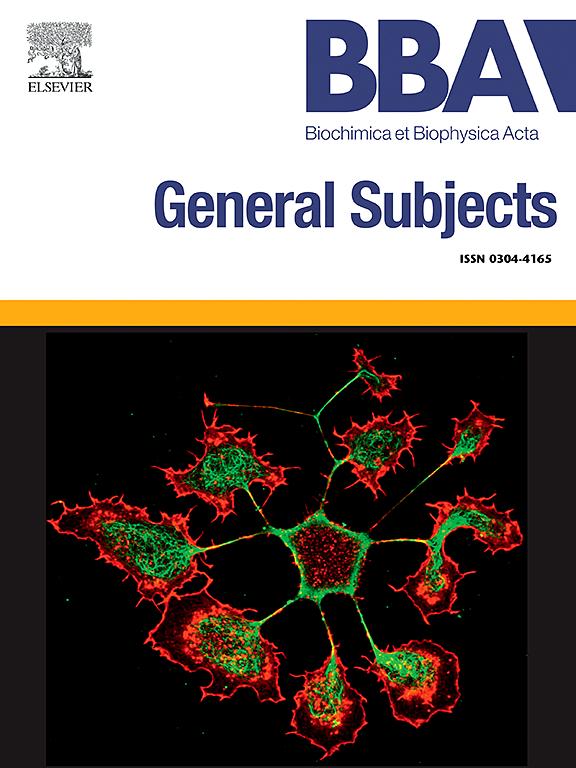Study on the activity of targeted delivery of DOX against melanoma by exosome-like nanovesicles of Rhodiola rosea
IF 2.2
3区 生物学
Q3 BIOCHEMISTRY & MOLECULAR BIOLOGY
Biochimica et biophysica acta. General subjects
Pub Date : 2025-02-17
DOI:10.1016/j.bbagen.2025.130776
引用次数: 0
Abstract
Melanoma is the main cause of death from skin cancer. The current treatment methods have prominent toxic side effects. In order to more effectively inhibit melanoma and reduce the toxic side effects during treatment, this paper constructs an engineering system using DSPE-PEG2000-pYEEIE(pYEEIE) molecules to modify exosome-like nanovesicles vesicles of Rhodiola rosea (RELNs) and load Doxorubicin (DOX). As a drug system, the aim is to achieve better targeting activity of the system towards melanoma cell A375. The results showed that the morphology and particle size of the prepared RELNs met the defined criteria for evaluating extracellular vesicles. The pYEEIE-RELNs-DOX drug delivery system has a better inhibitory effect on cell proliferation compared to DOX and RELNs-DOX. At the same time, the pYEEIE-RELN-DOX drug delivery system also showed better targeting towards tumor cells. In summary, this study proposes for the first time RELNs as a new generation of drug delivery carriers and uses them for drug delivery and inhibition of melanoma cell toxicity. This lays the foundation for subsequent animal and clinical experiments, and provides new ideas for the treatment of skin cancer caused by melanoma.
红景天外泌体样纳米囊泡靶向递送DOX抗黑色素瘤活性的研究。
黑色素瘤是皮肤癌致死的主要原因。目前的治疗方法毒副作用突出。为了更有效地抑制黑色素瘤,减少治疗过程中的毒副作用,本文利用DSPE-PEG2000-pYEEIE(pYEEIE)分子修饰红景天(reln)的外泌体样纳米囊泡,并负载阿霉素(DOX)构建工程系统。作为一种药物系统,目标是实现该系统对黑色素瘤细胞A375更好的靶向活性。结果表明,制备的reln的形态和粒径符合细胞外囊泡的评价标准。与DOX和RELNs-DOX相比,pYEEIE-RELNs-DOX给药系统对细胞增殖的抑制作用更好。同时,pYEEIE-RELN-DOX给药系统对肿瘤细胞的靶向性也较好。综上所述,本研究首次提出reln作为新一代药物传递载体,并将其用于药物传递和抑制黑色素瘤细胞毒性。这为后续的动物和临床实验奠定了基础,也为黑色素瘤引起的皮肤癌的治疗提供了新的思路。
本文章由计算机程序翻译,如有差异,请以英文原文为准。
求助全文
约1分钟内获得全文
求助全文
来源期刊

Biochimica et biophysica acta. General subjects
生物-生化与分子生物学
CiteScore
6.40
自引率
0.00%
发文量
139
审稿时长
30 days
期刊介绍:
BBA General Subjects accepts for submission either original, hypothesis-driven studies or reviews covering subjects in biochemistry and biophysics that are considered to have general interest for a wide audience. Manuscripts with interdisciplinary approaches are especially encouraged.
 求助内容:
求助内容: 应助结果提醒方式:
应助结果提醒方式:


